Abstract
Urban development is explained through planning, architectural and critical theoretical perspectives. The concept of peacock model comes as the living being tries to extricate itself from today’s polluted environment, this model resolves the problem by merging the buildings, waste management systems, Green and Blue Infrastructure into a cohesive whole by bringing nature close to where humans live. Rather than distancing humans from natural environments the Peacock model integrates human life around forests. The symbiosis of humanity and nature via this novel architecture may solve some of the greatest problems facing mankind. As more human choose to live in dense yet green natural environments we predict massive increases in productivity, increased happiness and sustainability.
Introduction and Literature Survey
There has been attempts to create sustainable green cities1 in the past like the garden cities of the United Kingdom. Even though they have received much acclaim, they have also received criticism for encouraging urban sprawl2 and result in low population densities. European and American cities are tethered by extensive car based transportation networks. Population Density in metropolitan Indian cities3 exceeds 20000 people/sq.km. The Peacock model proposed takes inspiration from the city of Curitiba, Brazil4 where all public parks are interlinked by pedestrian, cycling paths and an extensive BRTS system that allow commuters to travel across the cities without impinging the vehicular traffic in a seamless manner. Manhattan island, New York City has large Central Park that anchors the city and function as the green lung5. The Peacock model of urban design is an attempt to combine all these concepts to make the sustainable cities at a population density of about 20000-40000 people / sq.km which is the present population density of many of the urban metropolis in India Mumbai.
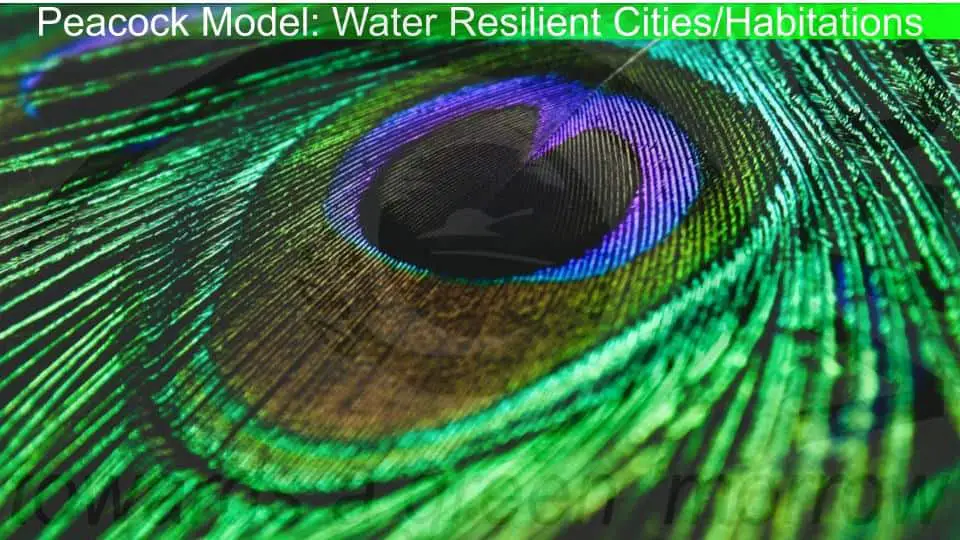 Figure1 : Peacock feather
Figure1 : Peacock feather
Peacock Model for Urban design
Peacock feathers describe the peacock Model for urban design, as the feather comprise the different colors merge together giving beauty to the environment. Similarly Peacock Model for urban design comprises the component giving the environment, community best sustainability solution increasing the beauty of Nature. The composition of blue, Green, brown, silver in the peacock feather states the component in the Urban model, blue as the water bodies, Green as forest area, Brown as the Open land and recreation areas and silver as the human Habitation.
Related: Relationship Between Mental Wellbeing and Green Space in Your City
Components of Peacock Model
Model below exhibit the the different component in the Urban design Habitation in the model consists of a mix Building of 36m Height creating the boundary to the Urban model. The building will be 10 floors +2 stilt for parking. Parking will only be in the stilt area. The area in the center 120 m width and 266m length will be for trees, solid waste Composting unit and waste water treatment unit and the rain water harvesting pond. Between the building and the center area, there is a track constructed which will be used as a running or cycling path of 6m.
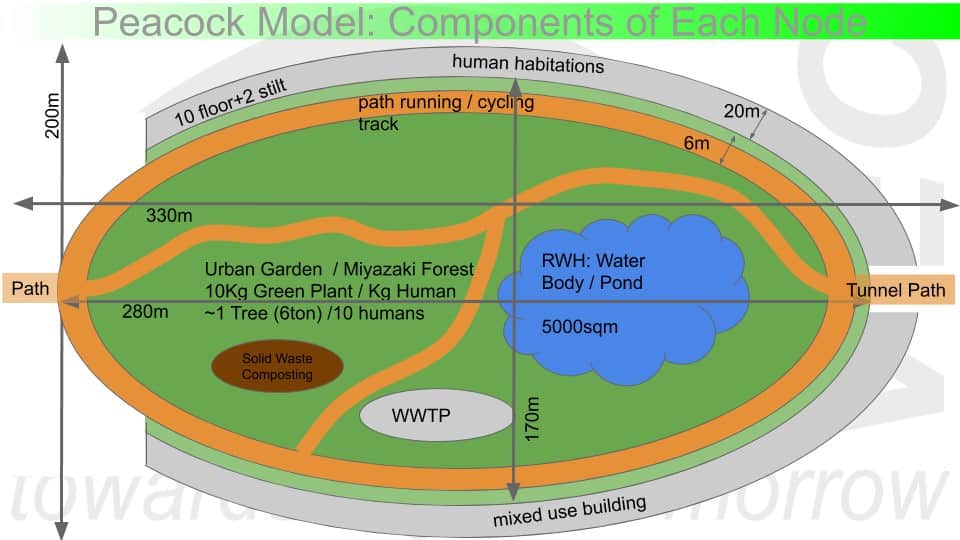
Figure 2: Peacock Model for urban design: Human habitat Floor Space 16000sqm
Waste generation from Community:
- Solid Waste Recycling / Composting system: Solid waste generated from the community will be collected and segregated Bio-Degradables waste is taken to the composting plant inside the urban model. The compost from the composting plant will be used as the manure for the trees thereby supporting urban gardening. Plastics, Metals, Glass, Electronics are recycled and reused.
- Waste Water Recycling System: Similarly wastewater is collected and taken to the Wastewater treatment plant . The treated water is used for flushing gardening, cleaning tracks, washing vehicles etc. This reduces the requirement of fresh water from outside. The critical aspect
Storm Water System
Rain water is collected through the storm drain and gets connected to the water body which is located in the center of the garden area which comprises nearly an area of 5000 sq.m. This pond gives the aesthetic view to the garden as well as recharge the groundwater table. Whenever need arises as when there is shortage in the water supply the water can be taken through the borewells and used for the day to day purpose.
Green Zones / Miyawaki Forests:
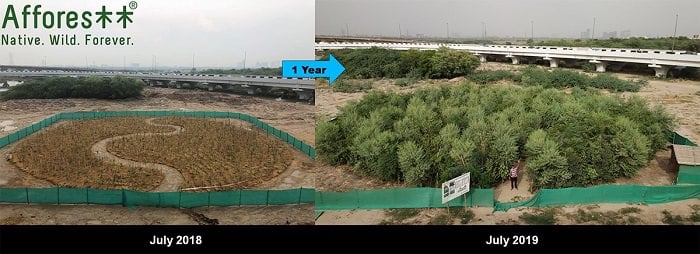
Figure 3: A Miyawaki Forest by Afforest6
Miyawaki Forests7 conceived by Dr Akira Miyawaki a celebrated botanist is an innovative concept in developing dense natural forests. The green zone integrates forest areas and Urban Permaculture8 is created around the waste recycling systems to allow utilization of the compost, treated wastewater and stormwater from the RWH system. The Green zone will contribute to the societies for their day to day vegetables in permaculture areas and construction materials like bamboo or teak from the forest areas. Green Zone prevents the Erosion of soil, they also provide transpirational cooling to the human habitations surrounding them. The green zone encourages natural and Arboreal wildlife. Measures are taken to connect these green zones to green zones in other nodes.
Habitations and Recreation
Infrastructure includes 36m tall buildings, interconnecting tunnels or skywalks, treatment units, joggers parks. The building includes 10 floors and 2 stilt floors. Stilt floor will be used as a parking, where a ramp from the ground will be provided. The Outside facing facade of the buildings could be business units and the inside facade would primarily be used for residential purposes. The design of the interiors of this mixed use facility would be to encourage shared common facilities. A set of 4 apartments could be served by a common lounge, common kitchen. Such model of community living have been successfully implemented by cooperative housing projects in many universities in United States and Canada.
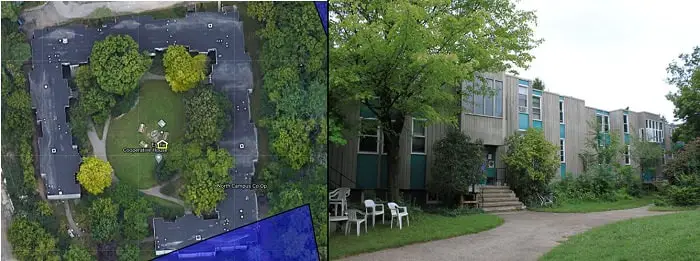
Figure 4 : Escher Cooperative House a blueprint for Social living
The cooperative house Renaissance and OKeefe house together called the Escher House9 (a noted civil rights leader)10 where the author stayed during his Ph.D. at the University of Michigan provides inspiration for this concept. We propose to convert this to serve families rather than just students. The shared living area and connected suites of Escher have been replicated in the Peacock model. We believe that the interconnected living space will give rise to collaborations and social networks leading to massive increases in productivity. The building designed can be used for Schools, Business, Hospitals, Restaurants, Retail and Business in a flexible manner. The idea of this flexible design is to minimize the requirements of residents to commute long distance for daily needs. Escher house was designed so that residents could traverse the entire house via interlinked corridors at all levels. Common areas within such a design became locations for exchange of idea, thoughts and discussions. Escher House for example had common kitchens (9 of them) and 2 large kitchens which catered to community meals in the evening. This was very similar to the Sanjha Chulha concepts of community cooking in Rajasthan in India or Langars in Sikh Gurdwaras .
Life Cycle and Maintenance Cost
Peacock Cities are designed to give responsibility and employment to private entities hired by each node to maintain and harness the facilities provided for public benefit. The green zone area can cultivate the fruits, vegetables, flowers in the huge amount and earn by selling this to the community in that zone. This creates the transparency of the producer and the consumer, builds the trust and since can be paid more. People in the habitat had to pay a very low maintenance cost as revenue will be generated from the waste generated by the society making waste as their resource.
Key Technologies
Choosing eco sensitive, low lifecycle cost, locally maintainable technologies are critical in the Peacock model to decrease cost to the inhabitants. Close Integration of such ecological facilities also results in significant savings for inhabitants. One of the key costs of living in cities is the power costs for cooling. Peacock cities are designed to provide ecologically assisted cooling via their central forests.
Rain Water Harvesting
Nowadays the rainfall is uncertain and the level of groundwater gradually goes on reducing. It is very important to create a rainwater harvesting system for every township so to reduce the water requirement from an outside source. The proper design of the water body to handle the storm water surges so that the rain water harvesting system can recharge ground water is critical. The inlet works of the water harvesting system have to remove undesirable contaminants like silt/grit and micro pollutants before allowing the water to percolate into the subterranean Aquifers.
Waste Water Recycling Technology
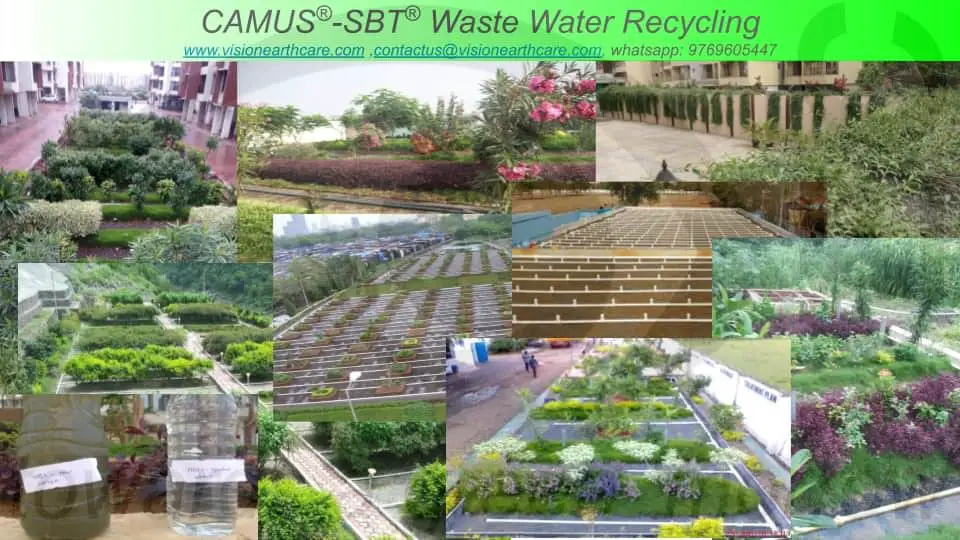
Figure 5: Collage of images of CAMUS-SBT type Waste Water Treatment Plants11
Waste Water treatment is a critical infrastructure. In general the quality of life of communities with excellent waste water recycling facilities is far superior to nearby cities with inferior facilities. The treated waste water allows a higher levels of cleanliness. Many waste water technologies exist, however the quality of treatment is dependent greatly on the attention to detail and operations and maintenance of such plants.
We propose that natural technologies capable of high quality of treatment meeting or exceeding NGT12 13, norms14 such as CAMUS-SBT15, Vermifilters16, should be used due to their lower operating costs and superior water quality. However using more conventional treatment processes like MBBR17, SBR18, ASP19 etc may be considered with proper contract conditions with WWTO vendor to ensure quality outcomes required for reuse. In Peacock cities Flush reuse of waste water is mandatory as that ensures that the vendor providing the waste water treatment solution necessarily has to provide quality outcomes as the product (treated waste water) is being checked for quality on a constant basis by the user in the toilets and green areas where it is used for irrigation. Natural treatment technologies we recommend can be integrated into the forest areas more easily.
Solid Waste Recycling Technology
Technology came for the solid waste treatment which includes vermicomposting20, bio gasification Pyrolysis. Composting can be the technology which is used sustainably to maintain the luxuriant green zone. Compost from the composting plant will be used as the fertilizer for the plants which are grown in the green belt this give more productive in terms of Agricultural Products. Organic Solids wastes can also be used for biogas applications along with the waste biomass produced by the green areas. It is our estimate that food waste of 100 families can provide cooking gas for 1 family. However with the presence of leaf litter and biomass from the forest we are confident that up 20% of cooking gas can be obtained from green zone if deemed necessary.
Roof Top Solar Panels and Solar Heaters
Solar panels are installed at the roof of the building. The solar power generated by the solar system is to be used for the common area like parking area, lift ,corridors, stair case, garden area etc. Solar Heaters for the entire building ensure that the sun powers all requirements for hot water and perhaps even steam for commercial kitchens. Such concepts have been successfully implemented in many charitable institutions for their community kitchens.
Related: Urban Planning & COVID-19 | Density, Travel Demand, Water & Hygiene
Network of Infrastructure
We recognize that the biggest benefits of such models of urban design are achieved when the master plan ensures that all infrastructure is properly networked. One critical design feature of the Peacock model naturally enforced separation of pedestrians/cyclists from arterial roads by creating separate rights of way (ROW) within the green zone. Road networks are all designed in essentially straight lines/continuous corridors to allow fast movement of cargo and traffic. is considered to be one of the keys to urban development of a region. Arterial streets, a continuous route carries heavy traffic. Most of the commutes for residents in Peacock cities will be within the node itself. However the interconnectedness of green zones of all nodes allows commuters to chose eco friendly non vehicular modes of transit such as cycling, electric carts, skates, running etc, in water rich cities/areas the pond networks can be connected by canals to promote boating as a method of transit. Huma powered transit will be supported by a shower/locker facility will be made available at every node that would allow commuters to choose to commute freely knowing that at the end of the commute they can take a shower, change, go to work and then in the evening get the exercise they need in their commute back home. Such facilities are commonly available in most American and European cities and allows residents of these cities to choose such alternatives for their commute.
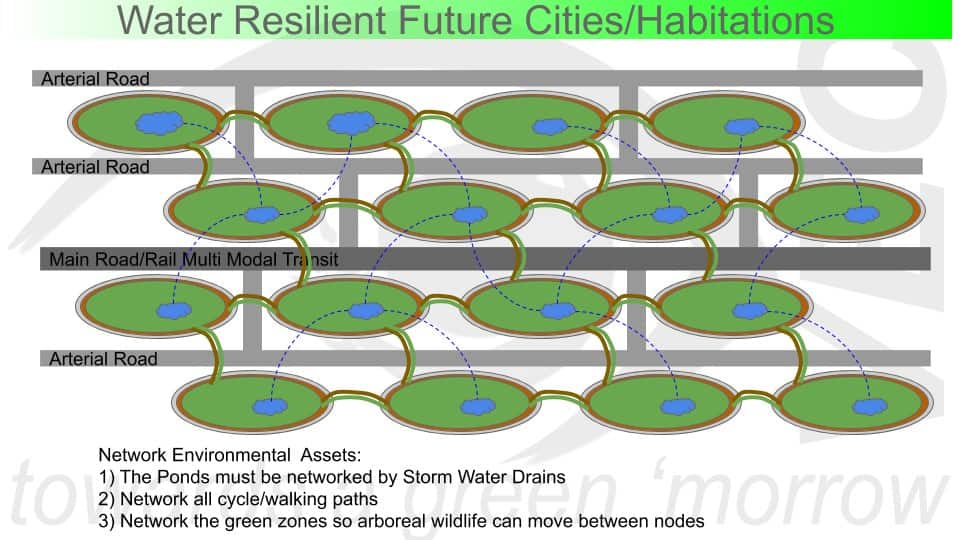
Figure 6 : Network Environmental Assets
Storm networks are also connected to each other, excess in one area overflows to other reservoirs downstream and the rain water harvesting structures will replenish the ground water for the entire city. The Green Zone are also connected via green corridors which allow small wildlife (squirrels, rabbits, hares, porcupines, beavers, peacocks, deer, foxes etc) to traverse the city. This concept was inspired by the author’s time at the IIT Bombay and University of Michigan campus where there was a significant yet safe interaction of wildlife and humans. Infact for added safety pedestrian corridors can be chain linked fenced to prevent wild life from harming humans if more dangerous animals such as foxes and wolves are envisaged in any node. Perhaps in some nodes the central green zone can be converted to public zoos with more extensive wildlife.
Conclusions and Call for Action
Looking forward for the collaborators to take this initiative forwards. The concept note is released to generate a discussion around eco-friendly cities. Please connect with us at [email protected] https://www.linkedin.com/company/vision-earthcare/
Author Bio: Dr. Chandrashekar (Ph.D) completed his B.Tech in Chemical Engineering at IIT Bombay After IIT Bombay. He finished his Ph.D from the University of Michigan at the Department of Materials Science and Engineering on the computational study of smart self healing materials with the biologically inspired ability to heal failure, he also stayed in Cooperative Housing Societies governed by the Inter Cooperative Council (ICC)21 where the diverse membership from many nations shaped many of the concepts being incorporated here. Post his PhD, He worked as a Post Doctoral Researcher on development of Novel membrane systems based on Carbon Nanotubes and Graphene for low energy reverse osmosis applications for desalination at the University of Pittsburgh. In 2010 inspired by the pioneering work by Prof Shankar at IITB who demonstrated the ability of Soil Ecology to treat organic wastes. he returned to India as CEO and Director of Research and Product Development at Vision Earthcare Pvt Ltd (VEC) a Green Tech startup incubated in SINE (Society for Innovation and Entrepreneurship) at IIT Bombay. VEC has been instrumental in developing and promoting called Continuous Advanced Multistage System using Soil Bio Technology (CAMUS-SBT) which is the advanced form of technology that can meet the required NGT norms. Vision Earthcare has been instrumental in setting up over 150 CAMUS-SBT type water resource recovery plants serving 4.5 Million People Nationwide with a cumulative installed capacity of 45 MLD. VEC team and its contractor partners are currently executing 60 MLD of projects nationwide. VEC CAMUS-SBT technology is perhaps the largest nature inspired treatment technology with over 120MLD of waste water recycling project underway. Machines and movement have always been a passion. He is particularly interested in subject areas as Urban Planning, Aerospace, Advanced Materials, Energy Sciences, Urban Transportation systems such as Personal Rapid Transport (PRT) and drone based solutions for point to point connectivity. Apart from all things mechanical Chandrashekar is deeply inspired by natural systems and biology especially in the design of sustainable / green communities and habitations. He looks forward to greater interactions between the Industry, InfoTech, Academic, Architecture and Engineering communities in order to develop eco-friendly approaches that harmonize with the design of nature while providing the better and more sustainable living conditions. He looks forward to consulting for innovators and startups to bring their innovations to market.
Ms Ashwini Tayade completed her B.E in Civil Engineering at Sant Gadge Baba Amravati University and M.tech in Environmental Engineering from Veermata Jijabai Technological Institute, Mumbai. Currently working at the Vision Earthcare Pvt. Ltd. Mumbai
References:
- [1] “Garden city movement – Wikipedia.” https://en.wikipedia.org/wiki/Garden_city_movement. Accessed 30 Jun. 2020.
- [2] “Urban sprawl – Wikipedia.” https://en.wikipedia.org/wiki/Urban_sprawl. Accessed 30 Jun. 2020.
- [3] “List of cities proper by population density – Wikipedia.” https://en.wikipedia.org/wiki/List_of_cities_proper_by_population_density. Accessed 30 Jun. 2020.
- [4] “Curitiba – Wikipedia.” https://en.wikipedia.org/wiki/Curitiba. Accessed 30 Jun. 2020.
- [5] “Manhattan – Wikipedia.” https://en.wikipedia.org/wiki/Manhattan. Accessed 30 Jun. 2020.
- [6] “Role of Miyawaki forests in mitigating urban heat island effects.” 30 Sep. 2019, https://india.mongabay.com/2019/09/role-of-miyawaki-forests-in-mitigating-urban-heat-island-effects/. Accessed 1 Jul. 2020.
- [7] “Akira Miyawaki – Wikipedia.” https://en.wikipedia.org/wiki/Akira_Miyawaki. Accessed 1 Jul. 2020.
- [8] “Permaculture – Wikipedia.” https://en.wikipedia.org/wiki/Permaculture. Accessed 1 Jul. 2020.
- [9] “Escher Cooperative House – Wikipedia.” https://en.wikipedia.org/wiki/Escher_Cooperative_House. Accessed 30 Jun. 2020.
- [10] “Renaissance Community Homes.” https://www.rchi.org/home.html. Accessed 30 Jun. 2020.
- [11] “Vision Earthcare – 42 Photos – 3 Reviews … – Facebook.” https://www.facebook.com/visionearthcare/. Accessed 1 Jul. 2020.
- [12] “National Green Tribunal.” https://greentribunal.gov.in/. Accessed 30 Jun. 2020.
- [13] “National Green Tribunal Act – Wikipedia.” https://en.wikipedia.org/wiki/National_Green_Tribunal_Act. Accessed 30 Jun. 2020.
- [14] “After NGT asks for stringent norms for STPs — a new dilemma.” 8 May. 2019, https://www.downtoearth.org.in/news/waste/after-ngt-asks-for-stringent-norms-for-stps-a-new-dilemma-64412. Accessed 30 Jun. 2020.
- [15] “Vision Earthcare.” http://www.visionearthcare.com/. Accessed 30 Jun. 2020.
- [16] “Vermifilter – Wikipedia.” https://en.wikipedia.org/wiki/Vermifilter. Accessed 30 Jun. 2020.
- [17] “Moving bed biofilm reactor – Wikipedia.” https://en.wikipedia.org/wiki/Moving_bed_biofilm_reactor. Accessed 30 Jun. 2020.
- [18] “Sequencing batch reactor – Wikipedia.” https://en.wikipedia.org/wiki/Sequencing_batch_reactor. Accessed 30 Jun. 2020.
- [19] “Activated sludge – Wikipedia.” https://en.wikipedia.org/wiki/Activated_sludge. Accessed 30 Jun. 2020.
- [20] “Vermicompost – Wikipedia.” https://en.wikipedia.org/wiki/Vermicompost. Accessed 1 Jul. 2020.
- [21] “Inter-Cooperative Council.” https://icc.coop/. Accessed 1 Jul. 2020.